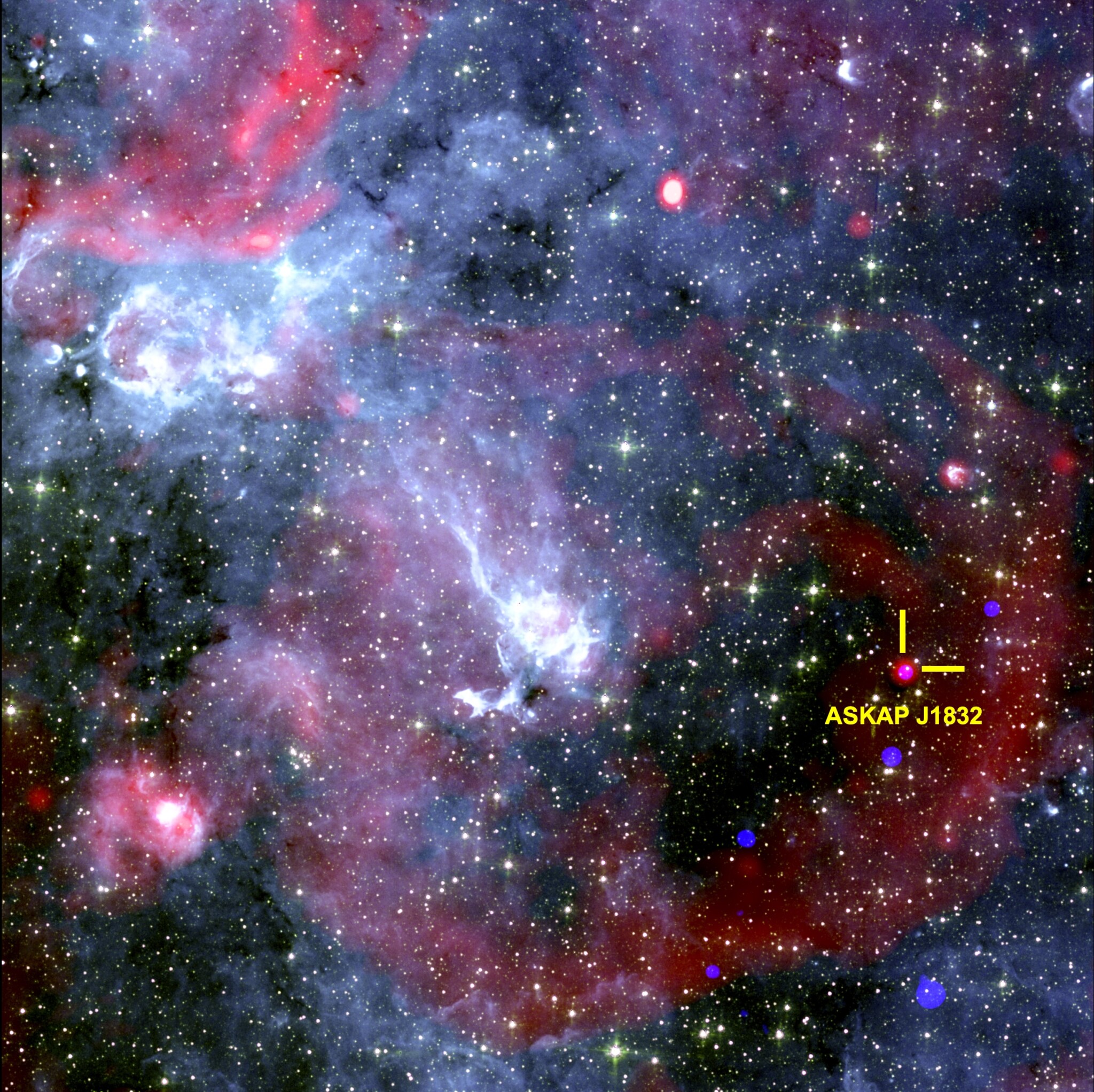Detected a transient object emitting pulses in both radio waves and X-rays
- This is the first time a long-period transient object has been detected in X-rays. Object ASKAP J1832-0911 is located in the Milky Way, about 15,000 light-years from Earth
- The pulse was detected with CSIRO’s ASKAP radio telescope and NASA’s Chandra X-ray Observatory
- IEEC researchers at the Institute of Space Sciences (ICE-CSIC) have collaborated in this finding, published in the Nature journal

An international team of astronomers led by Australia’s International Centre for Radio Astronomy Research (ICRAR), with the participation of researchers from the Institute of Space Studies of Catalonia (IEEC — Institut d’Estudis Espacials de Catalunya) at the Institute of Space Sciences (ICE-CSIC), and the Institute of Astrophysics of Andalusia (IAA-CSIC), has detected a new long-period transient object: a recently discovered type of cosmic phenomenon. The study is published in the journal Nature.
The object, known as ASKAP J1832-0911, emits pulses of radio waves and X-rays for two minutes every 44 minutes. This is the first time objects like these, called long-period transients (LPTs), have been detected in X-rays. It is located in our Milky Way galaxy, about 15,000 light-years from Earth. Astronomers hope it may provide insights into the sources of similar mysterious signals observed across the sky. Detecting these objects using both X-rays and radio waves may help astronomers find more examples and learn more about them.
The team discovered ASKAP J1832-0911 by using ASKAP radio telescope on Wajarri Country in Australia, owned and operated by Australia’s national science agency, CSIRO. They correlated the radio signals with X-ray pulses detected by NASA’s Chandra X-ray Observatory, which was coincidentally observing the same part of the sky.
“Discovering that ASKAP J1832-0911 was emitting X-rays felt like finding a needle in a haystack,” said lead author Dr Ziteng (Andy) Wang from the Curtin University node of ICRAR. “The ASKAP radio telescope has a wide field view of the night sky, while Chandra observes only a fraction of it. So, it was fortunate that Chandra observed the same area of the night sky at the same time,” he adds.
A new cosmic phenomenon
LPTs, which emit radio pulses that occur minutes or hours apart, are a relatively recent discovery. Since their first detection by ICRAR researchers in 2022, ten LPTs have been discovered by astronomers across the world. Currently, there is no clear explanation for what causes these signals, or why they ‘switch on’ and ‘switch off’ at such long, regular and unusual intervals.
“This object is unlike anything we have seen before. ASKAP J1831-0911 could be a magnetar (the core of a dead star with powerful magnetic fields), or it could be a pair of stars in a binary system where one of the two is a highly magnetised white dwarf (a low-mass star at the end of its evolution),” Dr Wang said. “However, even those theories do not fully explain what we are observing. This discovery could indicate a new type of physics or new models of stellar evolution,” he adds.
According to second author Professor Nanda Rea, IEEC researcher at the ICE-CSIC, “finding one such object hints at the existence of many more. The discovery of its transient X-ray emission opens fresh insights into their mysterious nature.”
“What was also truly remarkable is that this study showcases an incredible teamwork effort, with contributions from researchers across the globe with different and complementary expertise,” added Rea, who contributed to the results interpretation and the X-band observations.
“This is the first time that X-ray emission has been detected in this kind of object, and the most surprising thing is that its behavior is unlike anything known in our galaxy: it is extremely bright, varies greatly in intensity and does not fit into traditional categories, such as neutron stars or white dwarfs,” says Miguel A. Pérez-Torres, an IAA-CSIC researcher involved in the study. “The object is thousands of times more luminous than expected based on its rotation, which forces us to reconsider some physical models,” he notes.
The discovery also helps narrow down what the objects might be. Since X-rays are much higher energy than radio waves, any theory must account for both types of emissions—a valuable clue, given their nature remains a cosmic mystery.
Press release prepared in collaboration with the Institute of Space Sciences.
More information
This research is presented in a paper entitled “Detection of X-ray Emission from a Bright Long-Period Radio Transient”, by Ziteng Wang, Nanda Rea et al., to appear in the journal Nature on 28 May 2025.
Contacts
IEEC Communication Office
Castelldefels, Barcelona
E-mail: comunicacio@ieec.cat
Lead Researcher at the IEEC
Nanda Rea
Institute of Space Studies of Catalonia (IEEC)
Institute of Space Sciences (ICE-CSIC)
E-mail: rea@ieec.cat, rea@ice.csic.es
About the IEEC
The Institute of Space Studies of Catalonia (IEEC — Institut d’Estudis Espacials de Catalunya) promotes and coordinates space research and technology development in Catalonia for the benefit of society. IEEC fosters collaborations both locally and worldwide and is an efficient agent of knowledge, innovation and technology transfer. As a result of more than 25 years of high-quality research, done in collaboration with major international organisations, IEEC ranks among the best international research centres, focusing on areas such as: astrophysics, cosmology, planetary science, and Earth Observation. IEEC’s engineering division develops instrumentation for ground- and space-based projects, and has extensive experience in working with private or public organisations from the aerospace and other innovation sectors.
The IEEC is a non-profit public sector foundation that was established in February 1996. It has a Board of Trustees composed of the Generalitat de Catalunya, Universitat de Barcelona (UB), Universitat Autònoma de Barcelona (UAB), Universitat Politècnica de Catalunya · BarcelonaTech (UPC), and the Spanish Research Council (CSIC). The IEEC is also a CERCA centre.
